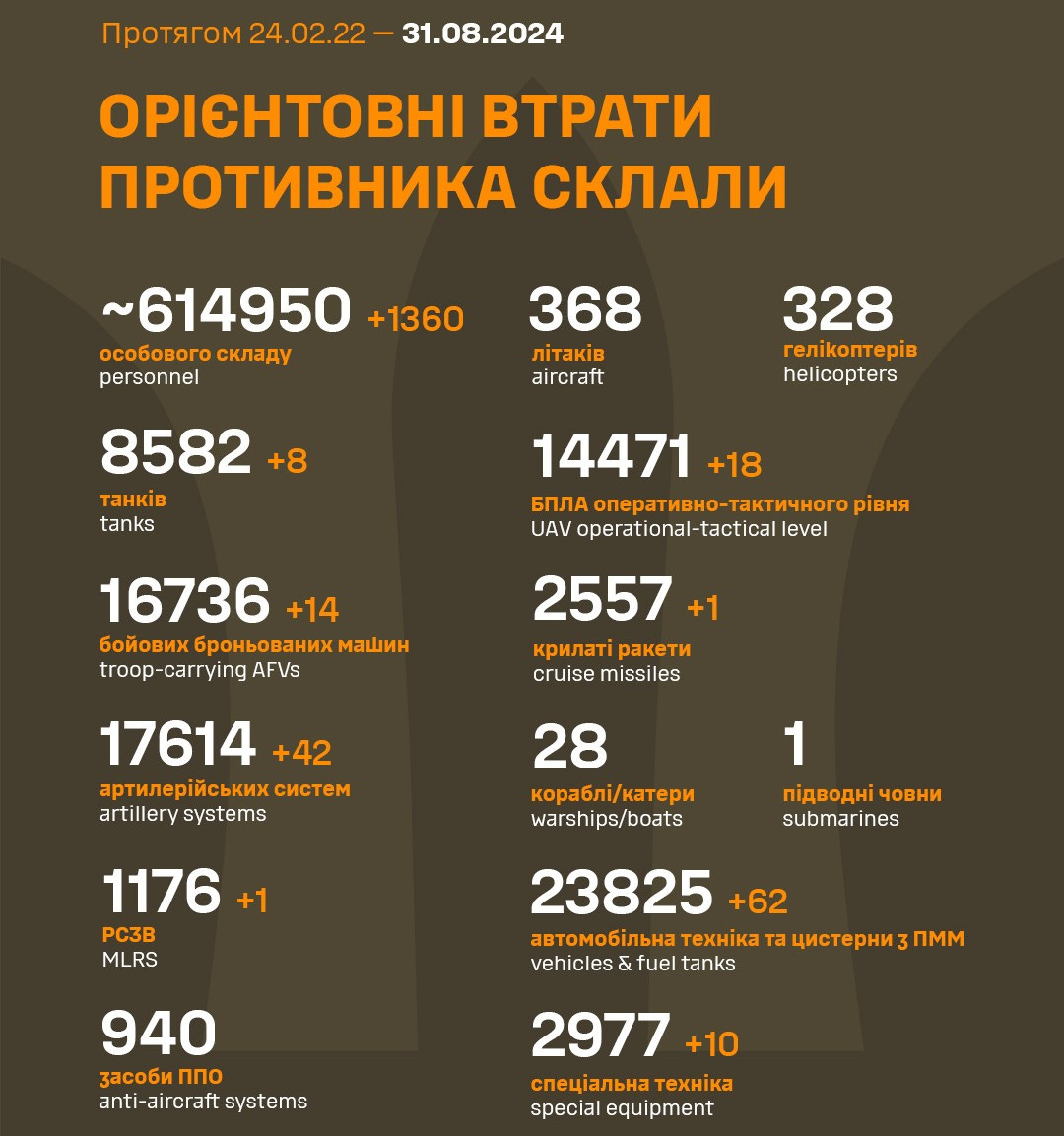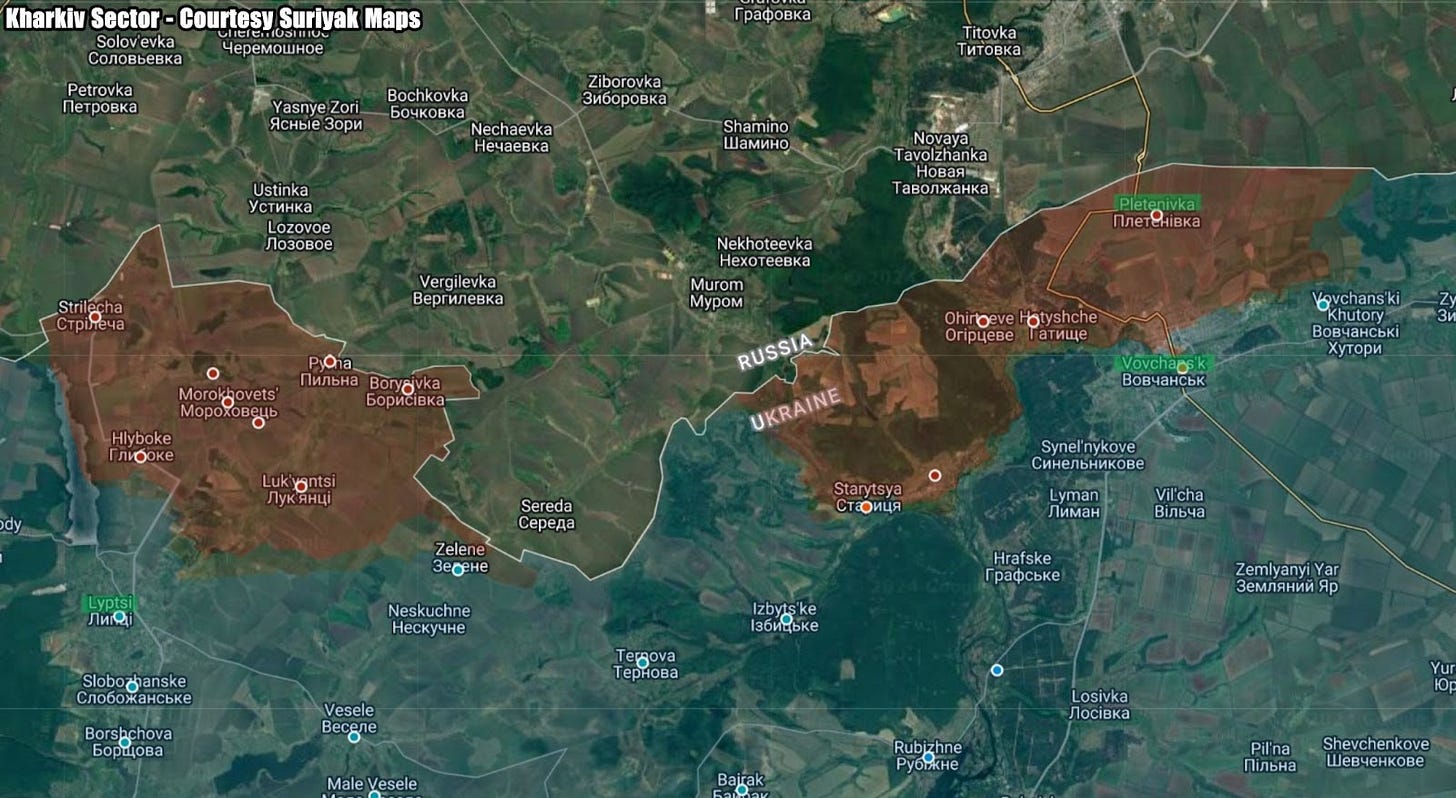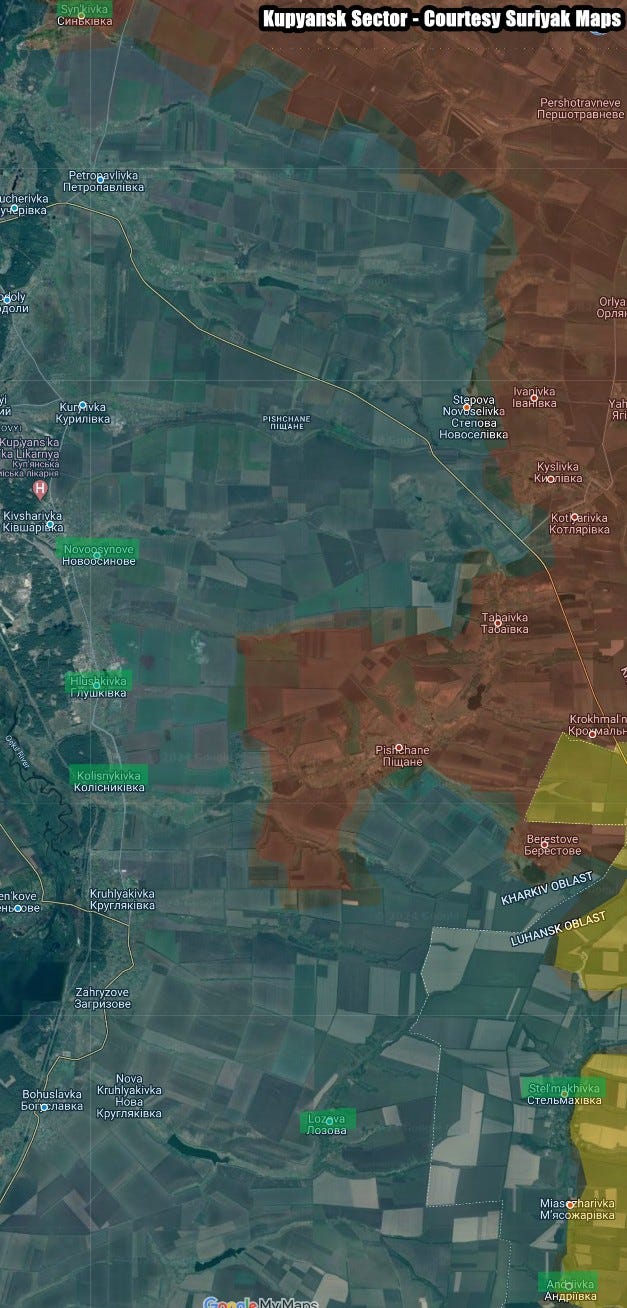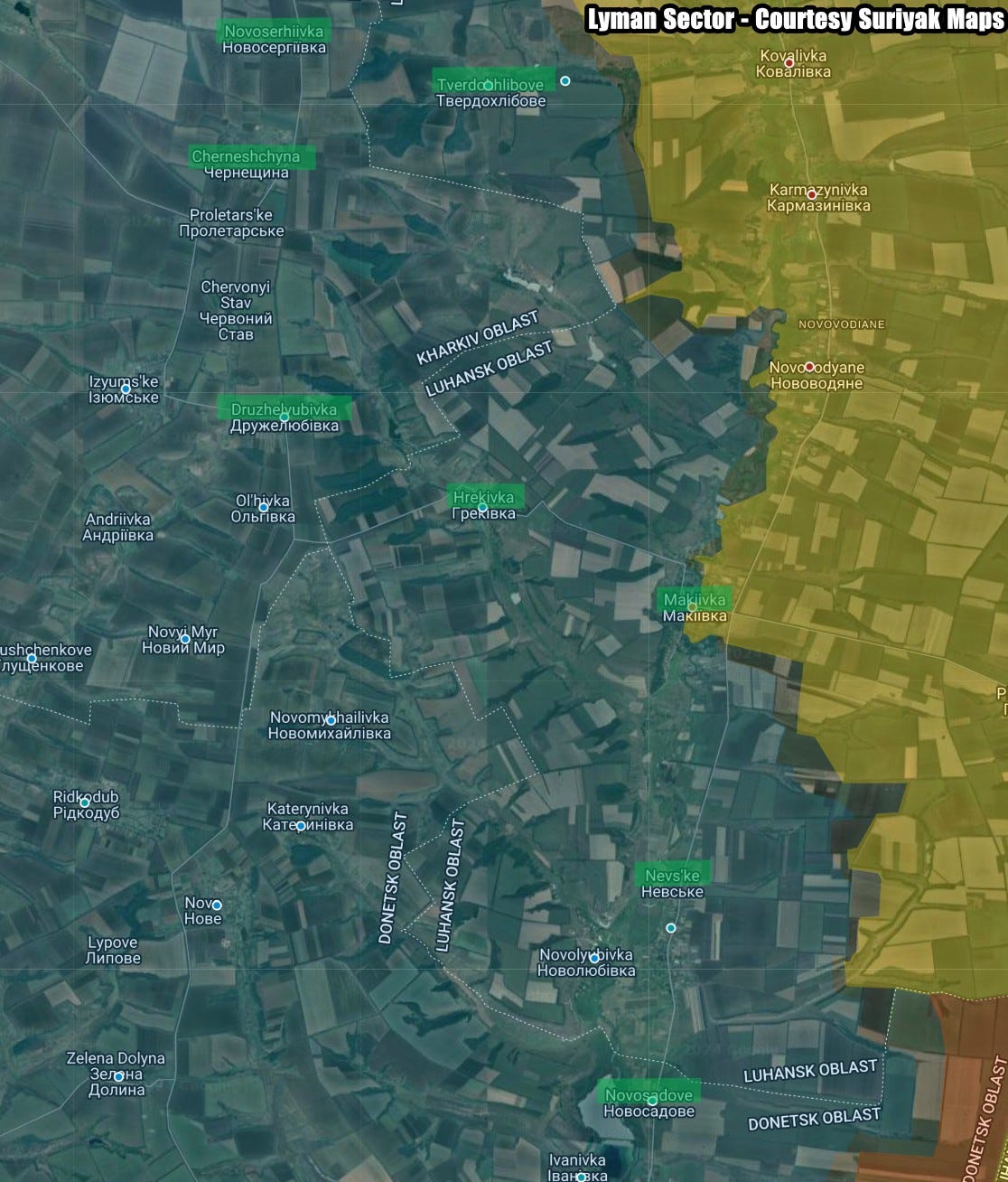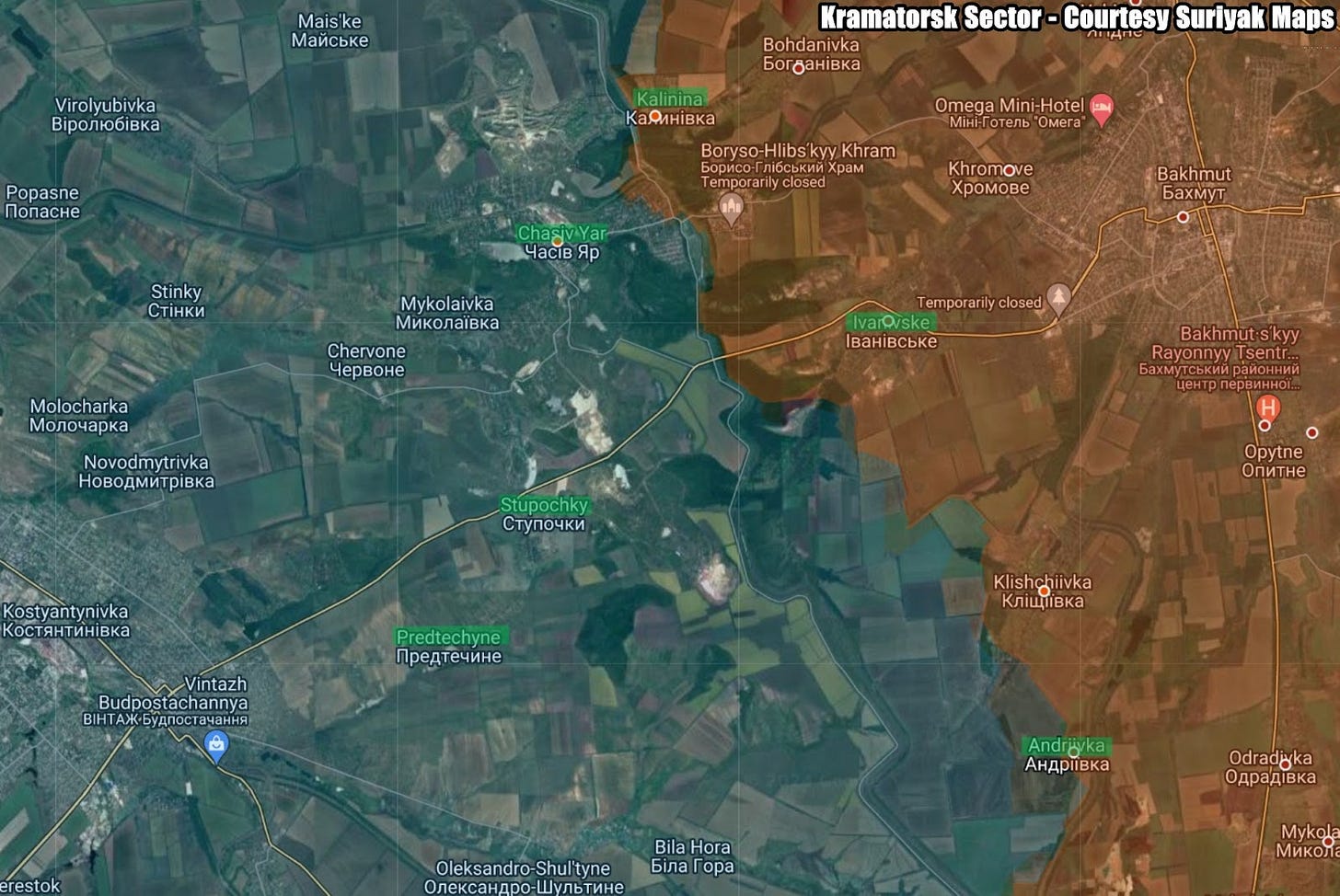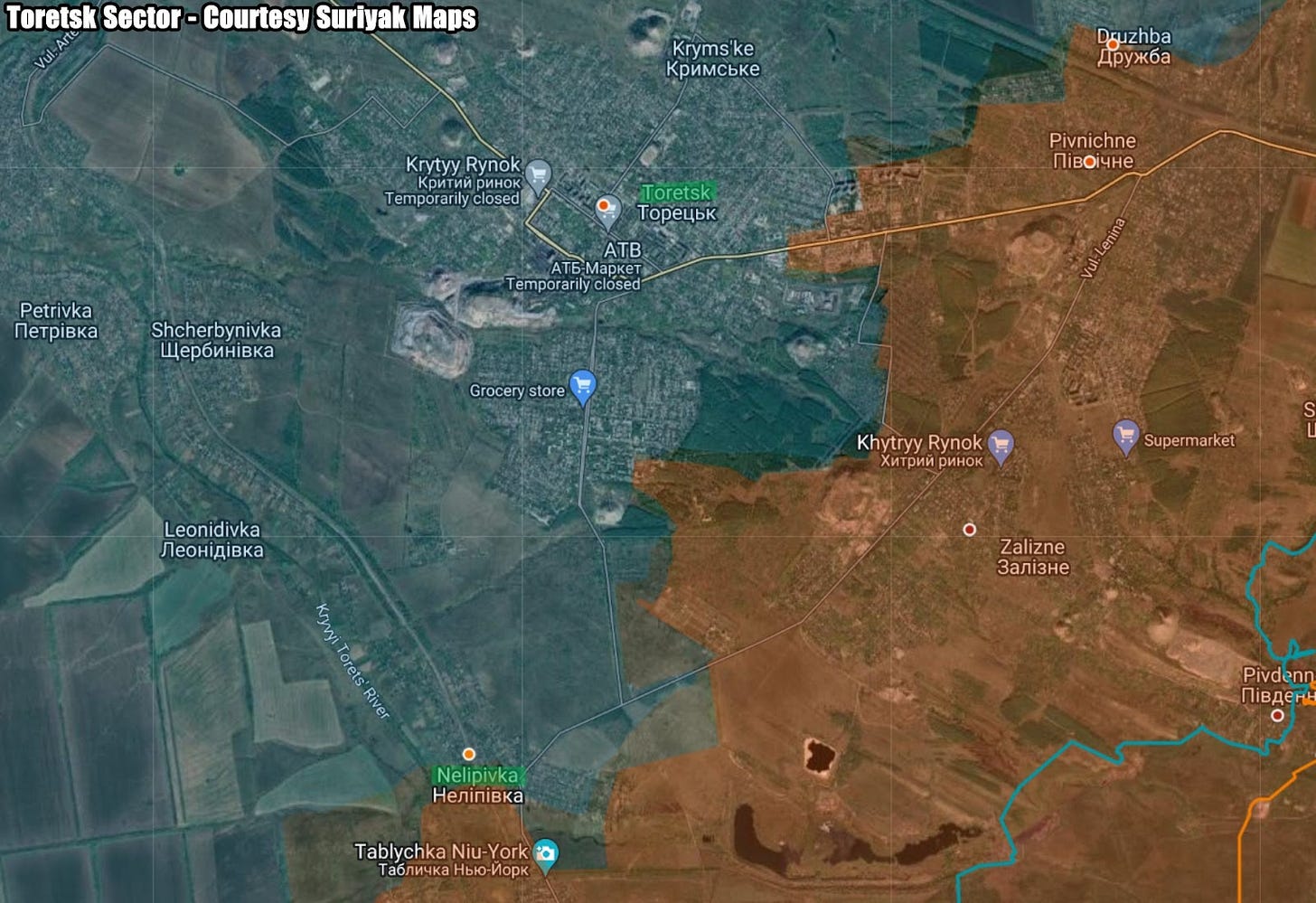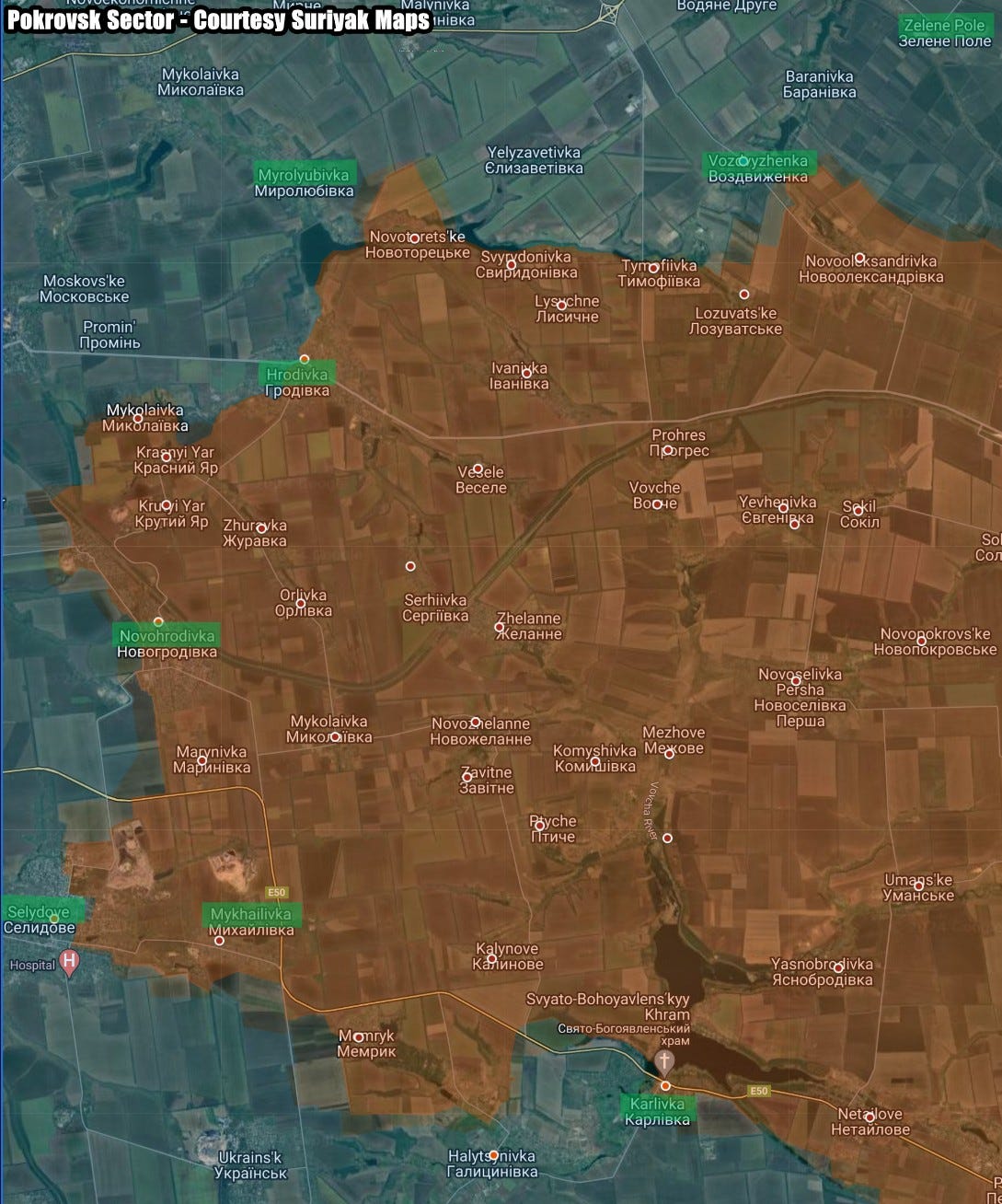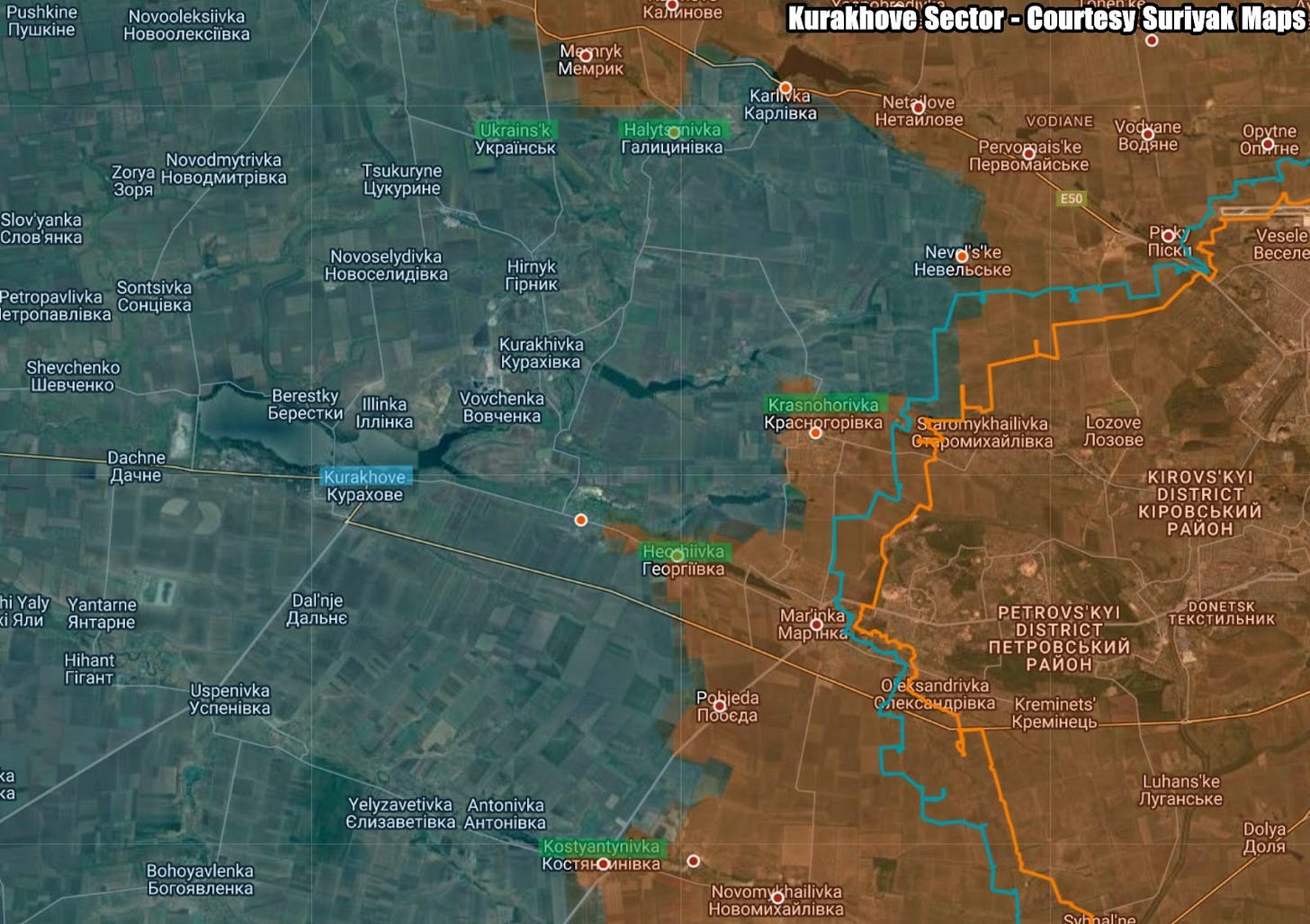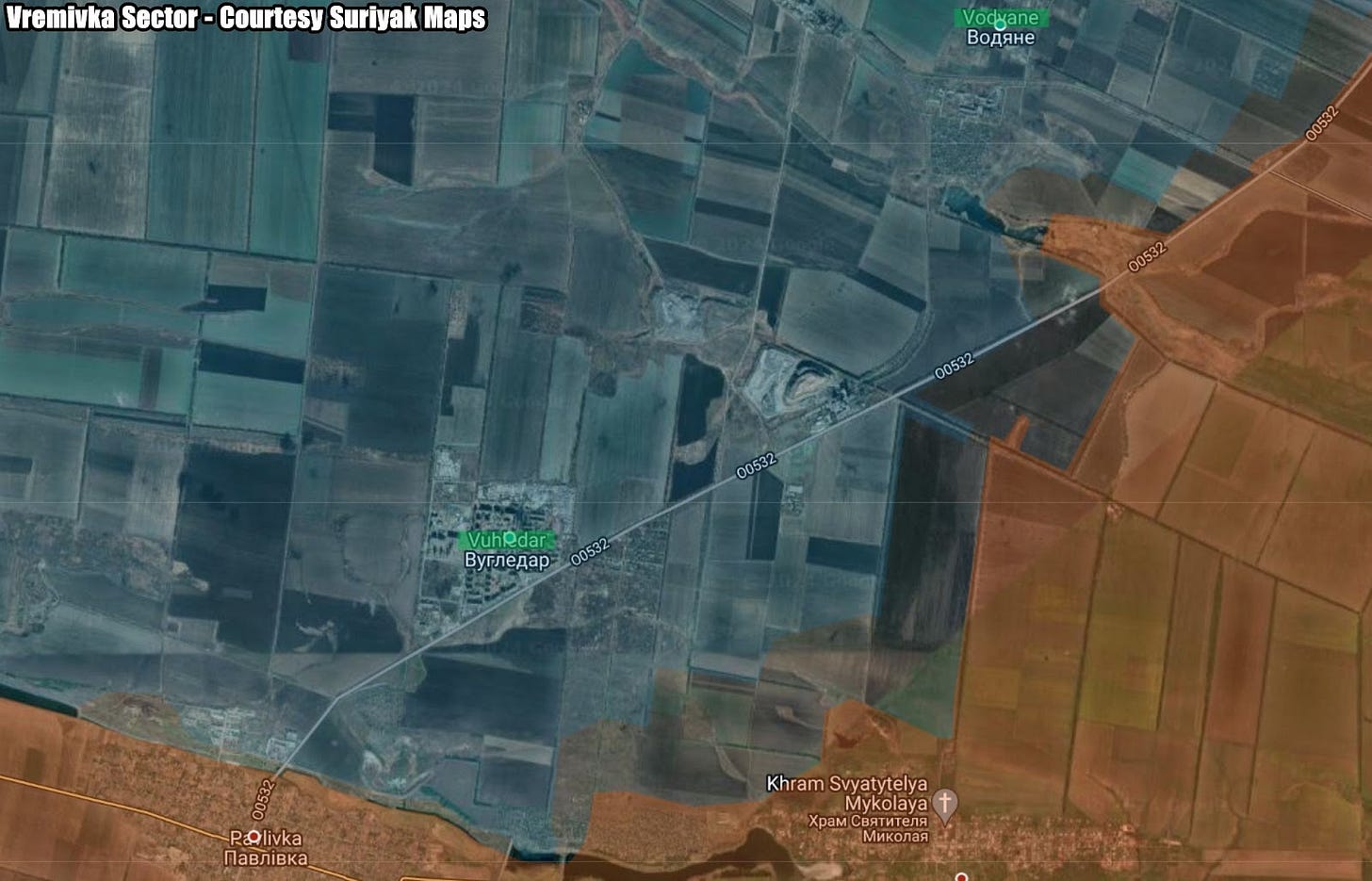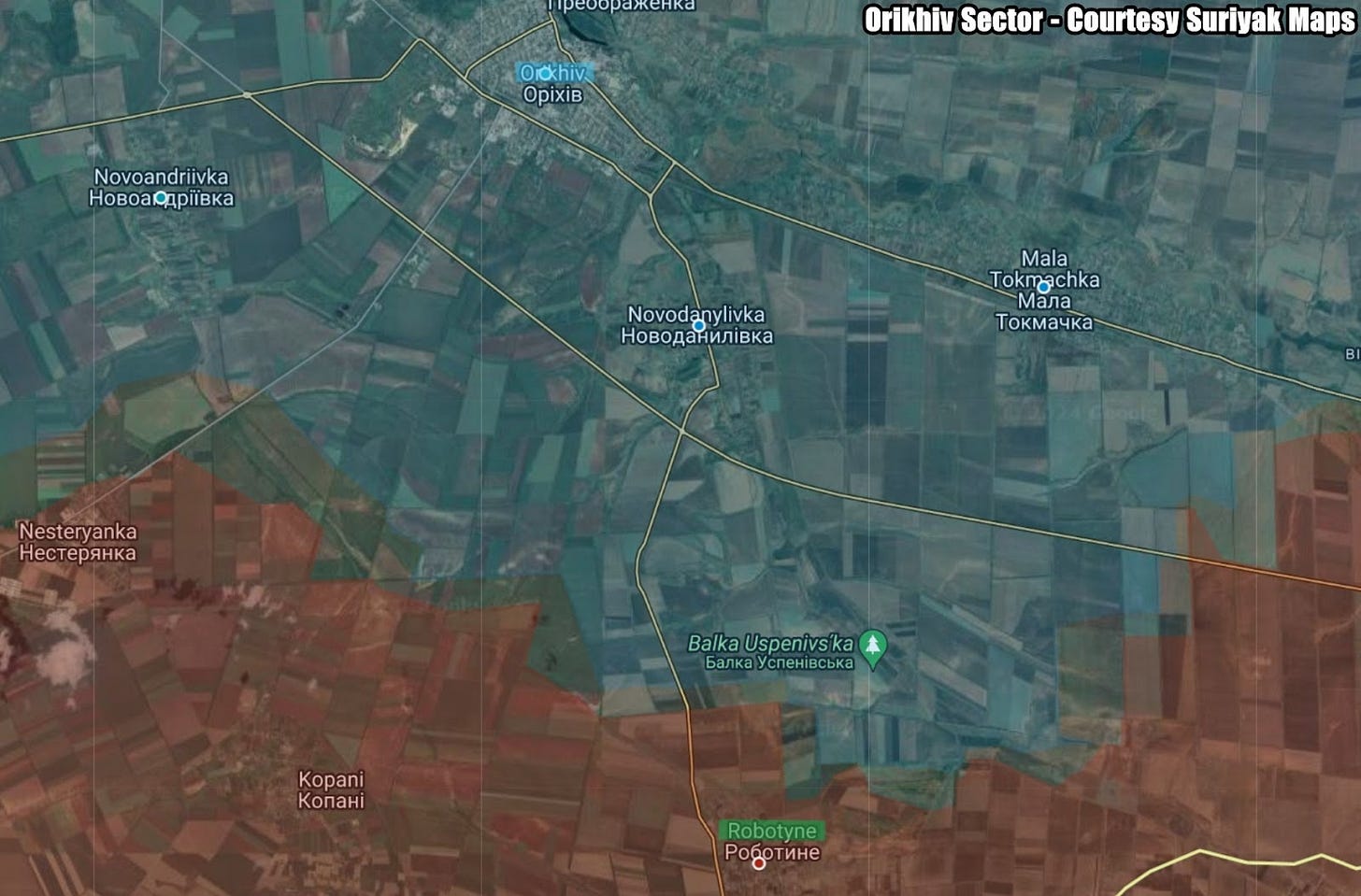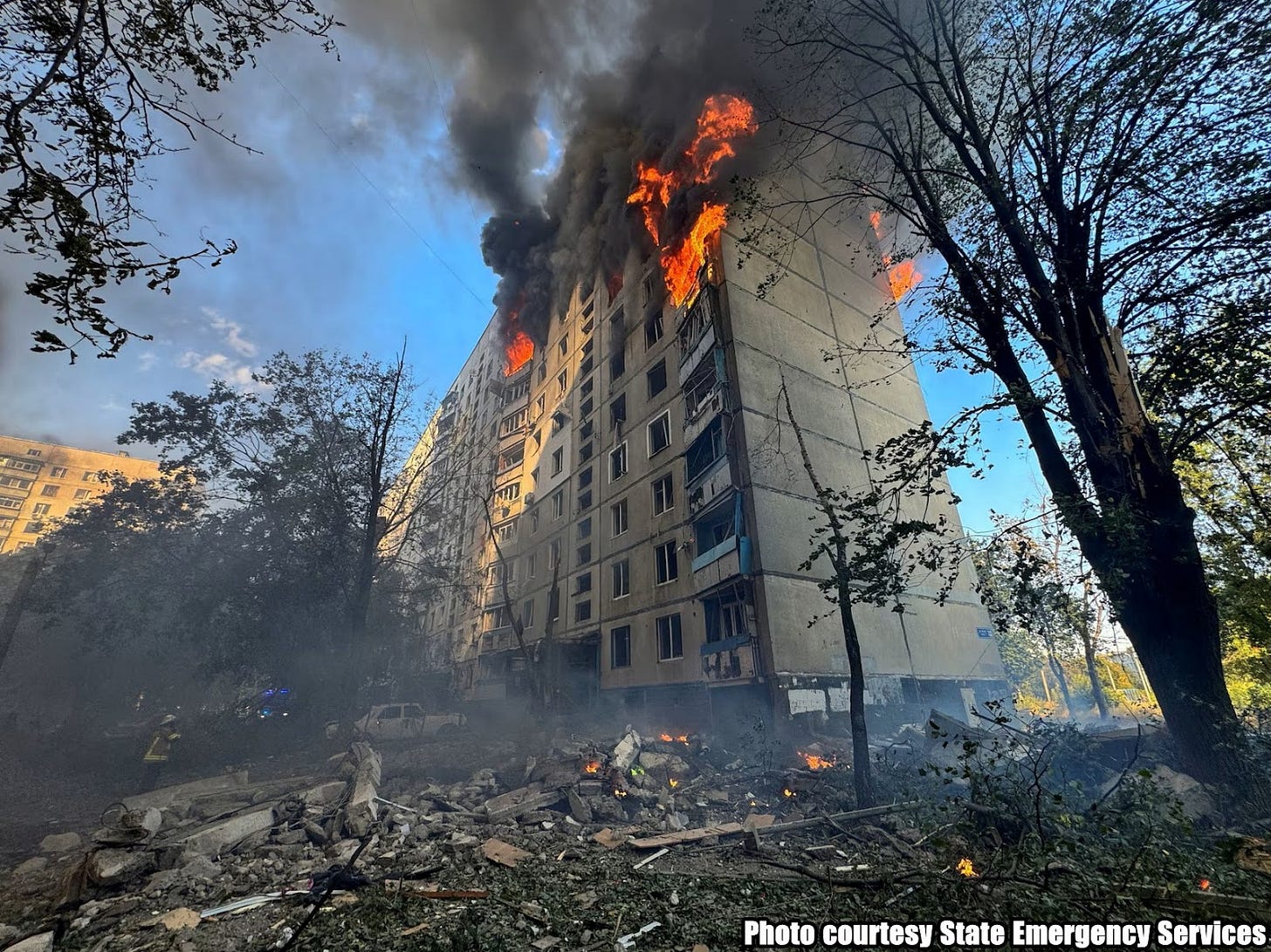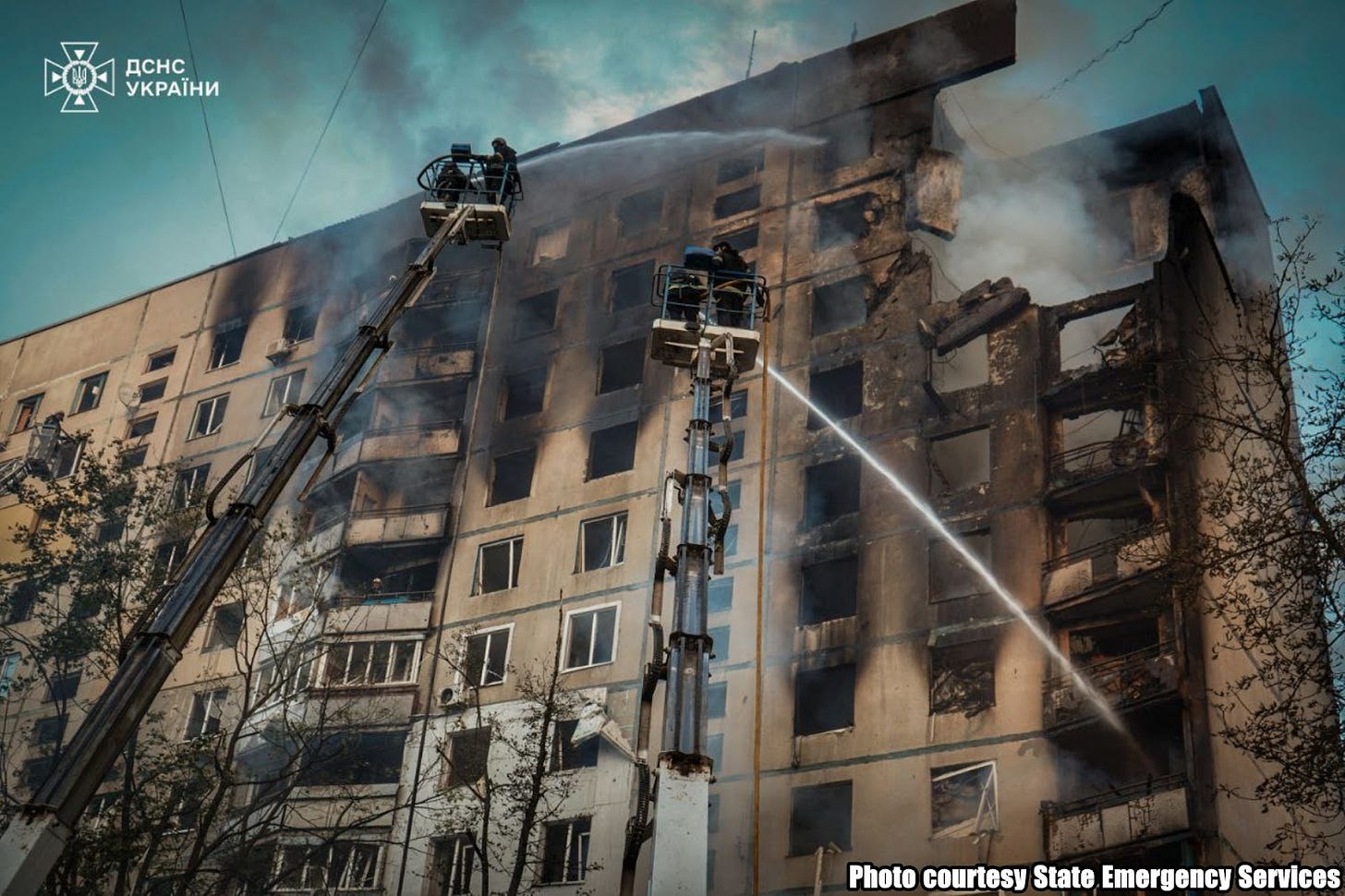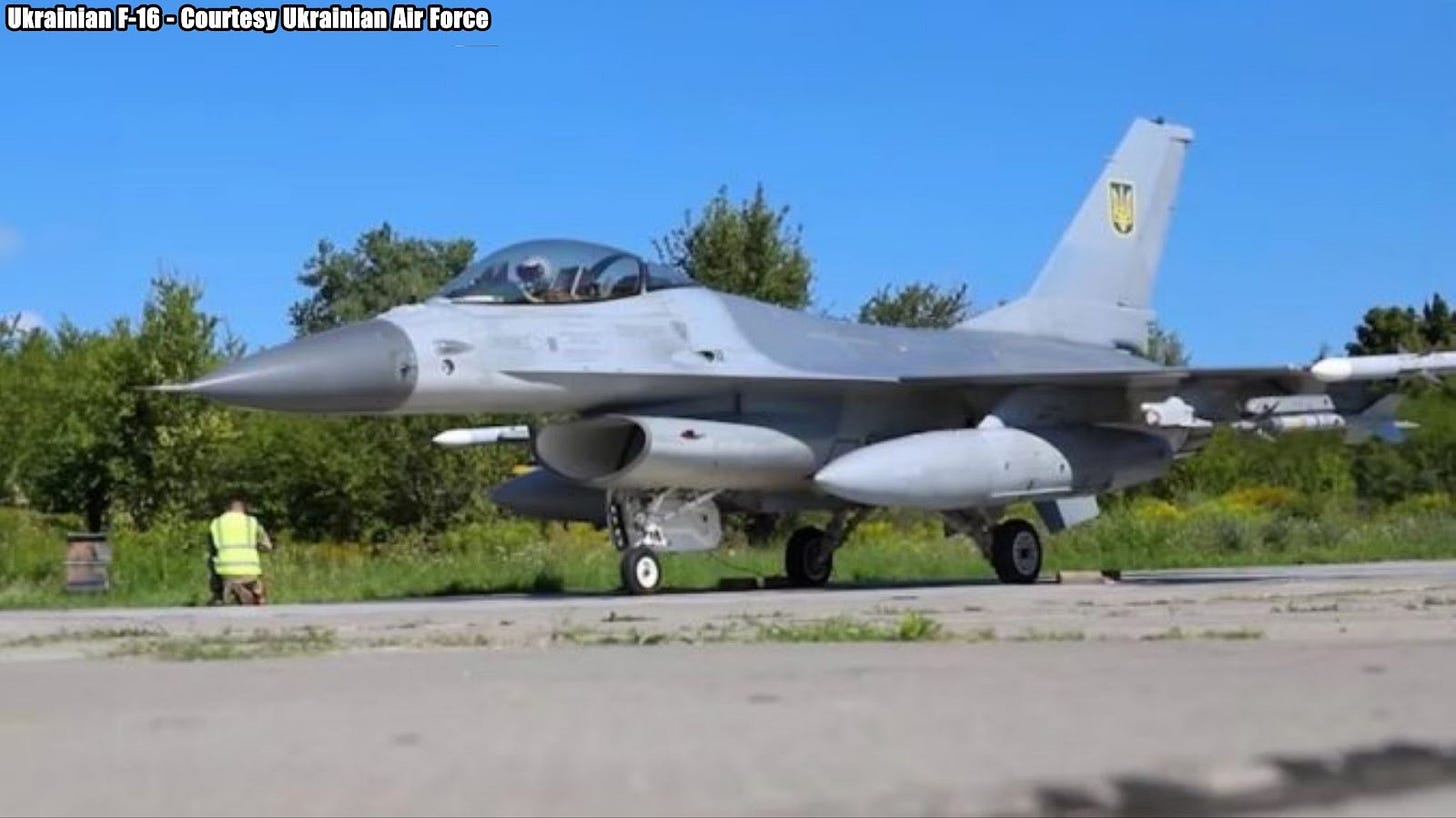Slava Ukraini! In early 2022 I began a Telegram channel aggregating news from a number of sources daily on the war in Ukraine. In June 2023 I began providing a daily draft for the Ukraine War Brief Podcast collecting news from over 70 sources daily, much of which formed the basis of the script. While the Podcast no longer exists I have continued to make this Brief available both on my own Substack and The People’s Media for those who wish to keep up with events on a daily basis.
All the latest news on the Russo-Ukraine War 6 days per week
ALONG THE CONTACT LINE
GSAFU Morning Report
The General Staff of the Armed Forces of Ukraine in its Operational Information update at 22:00 on Aug 31 stated that day 919 of the full-scale invasion of the Russian Federation against Ukraine was about to begin.
During the past day,179 combat engagements took place. Over the past 24 hours, the enemy carried out 2 missile strikes, 61 air strikes, 573 drone strikes and more than 3,180 artillery strikes across the positions of Ukrainian forces.
At the same time, Ukrainian soldiers continue to inflict losses in manpower and equipment on the occupying troops, exhausting the enemy along the entire front line and continue to disrupt the plans of Russian occupiers to advance deep into the territory of Ukraine.
Air Force Daily Report
On the night of August 31, 2024, the enemy struck with an Iskander-M ballistic missile from the Voronezh region, four S-300 anti-aircraft guided missiles from the occupied Donetsk region, and 52 Shahed-131/136 type UAVs from the Kursk region. - Russian Federation
Aviation, anti-aircraft missile forces, electronic warfare units and mobile fire groups of the Air Force and the Defense Forces of Ukraine were involved in repelling the enemy's air attack.
As a result of the anti-aircraft battle, 24 "Shahed-131/136" attack UAVs were shot down, 25 were lost in location (fell independently). Two drones flew in the direction of Russia, one more - in the Republic of Belarus.
Anti-aircraft defense worked in Kyiv, Poltava, Cherkasy, Dnipropetrovsk, Chernihiv, Kirovohrad, Mykolaiv and Sumy regions.
The Russian Border Incursion
Ukraine continues to make gains in Kursk
The Institute for the Study of War (ISW), a US based think tank, in its Aug 30 Russian Offensive Campaign Assessment stated that Russian sources claimed that Ukrainian and Russian forces made marginal gains in Kursk Oblast on August 30. Russian milbloggers claimed that Russian forces advanced on the southern outskirts of Korenevo, in the fields north of Olgovka (east of Korenevo), and south of Sheptukhovka (northeast of Korenevo).
Russian milbloggers claimed that Ukrainian forces advanced east of Cherkasskoye Porechnoye and Nizhnyaya Parovaya (both north of Sudzha). They also claimed that Ukrainian forces conducted assaults southwest of Korenevo near Snagost and Krasnooktyabrskoye; near Korenevo itself; east of Korenevo near Kremyanoye; north of Sudzha near Cherkasskoye Porechnoye, Kamyshevka, and Kireyevka; northeast of Sudzha near Martynovka; and southeast of Sudzha near Borki on August 30.
Elements of the Russian 30th Motorized Rifle Regiment (72nd Motorized Rifle Division, 44th Army Corps [AC], Leningrad Military District [LMD]) are reportedly operating near Malaya Loknya (northwest of Sudzha).
The Khortytsia operational-strategic group
(Responsible for the northeastern part of Ukraine. )
Kharkiv Sector: Ukrainian Defense Forces repelled several Russian attacks near Liptsiv, Vovchansk and Pletenivka. One enemy attack is still going on.
Kupyansk Sector: Russia Forces carried out 30 offensive actions against Ukrainian defensive positions near Sinkivka, Novoosynova, Hlushkivka, Kolisnikivka, Lozova, Stelmakhivka and Andriivka. 4 engagements are ongoing
Lyman Sector : Russia Forces carried out 22 offensive actions against Ukrainian defensive positions near Novoserhiivka, Tverdohlibovoye, Cherneshchyna, Druzhelyubivka, Hrekivka, Makiivka, Nevske and Novosadovoye. One attack continues near Druzhelyubivka.
Siversk Sector: Russian forces carried out 4 unsuccessful assaults in the vicinity of Verkhnokamianske, Ivano-Darivka and Vyimka.
Kramatorsk Sector: Russian forces carried out 12 unsuccessful offensive actions near Kalinina, Chasiv Yar, Ivanivske, Stupochky, Predtechyne and Andriivka.
Toretsk Sector: There have been 15 Russian attacks over that last day. All the efforts of the enemy were directed to the areas of Toretsk and Nelipivka. 3 assaults are ongoing.
The Tavria operational-strategic group
(Responsible for the central-eastern and southeastern part of Ukraine.)
Pokrovsk Sector: The greatest activity of the enemy today occurred in this sector. The enemy conducted 40 attacks against Ukrainian defences in this area over the last day concentrating in the vicinity of Zelene Pole, Vozdvizhenko, Myrolyubivka, Hrodivka, Novohrodivka, Marynivka, Mykhailivka and Karlivka. 8 battles continue. The situation is difficult.
Kurakhove Sector : Russian forces unsuccessfully tried to advance 23 times in the area of settlements Ukrainsk, Halytsynivka, Krasnohorivka, Heorhiivka and Kostiantinivka. 1 clash is ongoing.
Vremivka Sector: Russian forces made 8 assaults against Ukrainian positions near Voidane and Vuhledar. The situation is controlled by the Defense Forces of Ukraine.
Orikhiv Sector : The situation in this sector has not changed significantly. 1 enemy attack was repulsed over the last day in the vicinity of Robotyne.
The Odesa operational-strategic group
(Responsible for Kherson, Qırım, (also known as Crimea) and the Black Sea.)
Prydniprovsk Sector : In this sector, over the last day, the situation has not changed significantly. Russian forces made 2 unsuccessful attempts to force Ukrainian units from their positions on the left bank of the Dnipro.
TEMPORARILY OCCUPIED TERRITORIES
Nothing major to report.
THE HOME FRONT
Russian bomb hits high-rise building in Ukraine's Kharkiv, killing seven
A Russian guided bomb attack on Ukraine's northeastern city of Kharkiv hit a residential building and a playground on Friday, killing seven people, Reuters reported citing local authorities.
Ukraine's president Volodymyr Zelenskyy said a 14-year-old girl was among the dead. Ihor Terekhov, the city's mayor, had earlier said on Telegram that one child was killed in the playground.
The 12-storey apartment block caught fire as a result of the strike, the mayor said. The death toll from the attack climbed to seven when a woman's body was recovered from the rubble, he added in a later statement.
At least 77 have been reported injured, about 20 of the injured were in severe condition, regional governor Oleh Syniehubov said.
One end of the block was engulfed in black smoke, with many of the upper floors in flames. Several cars parked outside were gutted by fire.
Emergency services and rescue volunteers rushed to carry survivors out of the building. The body of one of the victims lay under a carpet on the ground outside, surrounded by police.
Residents of all ages, some of them covered in blood, sat stunned on benches and walls outside as medics attended to their injuries.
Kharkiv has been the focus of heavy Russian bombing throughout the war, although there had been a drop in intensity in recent weeks, possibly related to a shock incursion launched by Ukrainian forces into Russia's Kursk region.
Ukrainian authorities said that Friday's attack involved five aerial guided bombs launched from planes in Russia's Belgorod region, also known as "glide bombs" which are fitted with a navigation system taking them to their targets.
The weapons are hard to intercept and they have become a fearsome tool in the war in eastern Ukraine in recent months that can cause huge devastation.
Russia denies deliberately targeting civilians. Thousands have been killed and wounded during the full-scale invasion Moscow launched in Ukraine in 2022.
In the wake of the Kharkiv strike, Zelenskyy renewed a call on Western allies to allow Ukraine to use long-range Western weapons to attack Russian military air bases.
"A strike ... would not have happened if our defence forces had the ability to destroy Russian military aircraft where they are based," Zelenskyy said on Telegram. "There is no rational reason to restrict Ukraine's defences."
Kyiv says that the most effective way to counter such strikes is to target Russian planes, not the bombs themselves.
Ukraine's air force commander dismissed following F-16 crash
President Volodymyr Zelenskyy dismissed Ukraine's Air Force Commander Mykola Oleshchuk on Friday, according to a presidential decree. Reuters reports.
The dismissal was announced just a day after the Ukrainian military reported that an F-16 jet crashed and its pilot died while repelling a major Russian strike on Monday.
"I have decided to replace the commander of the Air Forces... I am eternally grateful to all our military pilots," President Volodymyr Zelenskiy said in his evening address.
He did not give a reason for dismissal but mentioned that personnel must be protected, and that there was a need to strengthen the command level.
Ukraine's General Staff said that General Lieutenant Anatoliy Kryvonozhka would temporarily perform the duties of commander.
The Ukrainian military did not provide a reason for Monday's crash but said the jet came down while it was approaching a Russian target. Oleshchuk said on Monday partners from the U.S. were helping to investigate the incident.
A U.S. defense official told Reuters that the crash did not appear to be the result of Russian fire, and possible causes from pilot error to mechanical failure were still being investigated.
The arrival of the first F-16 jets was a milestone for Ukraine in the fight against the full-scale invasion Russia launched 2- 1/2 years ago.
RUSSIAN WORLD
Russia creating volunteer units to counter Ukraine in Kursk Oblast while prioritising Pokrovsk axis
The UK Ministry of Defence in their Aug 30 Intelligence Update on Ukraine stated that on Aug 24 the Russian Kursk Oblast Administration announced the creation of the BARS-Kursk volunteer unit. Prospective recruits are promised that they will serve only within the Kursk Oblast in Russia on a six-month contract.
BARS (Combat Army Reserve of the Country) units were first established in 2021, initially intended to provide the Russian MOD with a cadre of active reservists with a high level of readiness and training.
Since March 2022, volunteers have been able to join BARS units for short-term service. BARS units are predominantly light infantry formations which lack integrated artillery or armoured vehicles. There are now over 30 BARS units across Russia.
The creation of the BARS-Kursk volunteer unit is almost certainly a Russian response to the Ukrainian incursion into the Kursk Oblast which began on Aug 6.
UK Intelligence analyses it is unlikely that the volunteer unit will be set up and able to support any Russian military activity in the Kursk Oblast over the next month. Although it is likely attempting to build its forces in the Kursk Oblast, Russia is currently prioritising the Pokrovsk axis in eastern Ukraine.
NEWS WORLDWIDE
Lithuanian FM - Russia is no match for NATO - it relies on our divisions
Sitting on NATO's eastern frontier, Lithuania has been punching above its weight when it comes to aiding Ukraine. The Kyiv Independent reports.
Lithuania is ranked among the top military donors in terms of GDP per capita, the country of 2.8 million has provided Ukraine with helicopters, drones, armored vehicles, and air defenses, not to mention extensive humanitarian support. Vilnius has also pledged to allocate at least 0.25% of its yearly GDP to boost Kyiv's defense capabilities.
This resolute support is not without cause. Sharing Ukraine's history of subjugation by Russia and sandwiched between the heavily armed exclave of Kaliningrad and Moscow's ally Belarus, Lithuanian leaders understand that freedom and sovereignty can be lost.
Foreign Minister Gabrielius Landsbergis has been one of the most vocal voices among Western top officials, calling for more decisive support for Ukraine and warning against Russian expansionism.
Landsbergis said the west has two fears “The biggest element is the fear that Russia's military capability would be tested (against us) if it considers certain elements of our support as an escalation. The second fear is what happens if Russia is defeated. And those two fears combined, they created such a dilemma for Western allies that they were unable to assist Ukraine to the fullest.”
Landsbergis defines victory for Ukraine as when it is safe and secure within its own internationally recognized borders and is part of the EU and NATO. He said “we should have learned about territorial concessions in 1938. Where did it lead us, and how much did it cost?”
Landsbergis also praised Ukraine’s counter-invasion of Russia as “within international law… from the military perspective, it is also a smart strategy.”
When asked if an open confrontation between NATO and Russia were possible Landsbergis said “It is possible. (But) we have to remember that NATO is a defensive alliance, and it would be Russia's choice to try that.”
“In real military scenarios, it's incomparable. NATO could overwhelm Russia. But the Russians are not counting on that. They are counting on – how they explain it to themselves – democratic weakness, inability to make decisions, differences in opinions.”
U.S. receives Ukraine’s target list for ATACMS strikes in Russia
Ukraine has provided the administration of U.S. President Joe Biden with a list of targets in Russia that the Ukrainian Armed Forces wish to strike using ATACMS missiles, according to Ukraine’s Defense Minister Rustem Umerov, New Voice reports.
According to Umerov, Washington is still considering Kyiv’s request.
“We explained the capability we need to protect our citizens from the Russian terror inflicted upon us by the Russians, so I hope they heard us,” the Ukrainian minister said.
Despite repeated requests from Ukrainian President Volodymyr Zelenskyy, the U.S. is not expected to ease restrictions on Ukraine’s use of ATACMS missiles, CNN noted on Aug 28.
“You’ve heard us say that Ukrainians can use U.S. security assistance to defend themselves against cross-border attacks—in other words, for counterfire. But regarding long-range strikes, deep strikes into Russia, our policy has not changed,” said Pentagon Press Secretary Brig. Gen. Pat Ryder.
The Pentagon also noted that most critical targets in Russia are beyond the reach of ATACMS missiles. Specifically, Russia has moved its aircraft to airfields located deep within the country, far from the border. However, Ukraine’s Defense Minister disagrees with these assertions. ISW also debunked these claims which we covered here
“We show that the airfields they use for strikes on our cities are within the range of deep strikes,” Umerov said in an interview with CNN.
On Aug. 30, the U.S. Office of the President reported that a Ukrainian delegation met with U.S. Defense Secretary Lloyd Austin in Washington.
Andriy Yermak, Head of the Presidential Office, and Defense Minister Rustem Umerov briefed Austin on the current situation on the frontlines, the urgent needs of the Defense Forces in weapons and equipment, as well as the latest attacks on Ukraine’s energy infrastructure by the aggressor state, Russia.
Below is the map from ISW’s report highlighting Russian strategic targets within ATACMs range of Ukraine:
MILITARY & TECH
Parus RCWS breaths new life into Ukrainian BMP-2s
The shifting landscape of modern-day battlefield dictates what is required from combat vehicles. One of the units from Ukrainian Armed Forces' 57th Mechanized Brigade operates a combat vehicle described as a "BMP-2 with a BM-7 Parus weapon station." Although, some suggest that it was actually a PRP-3 armored mobile reconnaissance system revamped as infantry fighting vehicle. Defense Express reports.
A video report showcasing this IFV on the frontline was published by ArmyTV, an official broadcaster of the Ministry of Defense of Ukraine.
The remote-controlled weapon station (RCWS) installed on this vehicle has three types of sights: for day and night vision, as well as infrared imaging. Zoom allows for aimed fire at distances up to 4 kilometers.
Compared with other IFVs of Soviet standard, this particular combat vehicle featured in the report is equipped with remarkably many computer-powered systems, making it more advanced yet difficult to master in terms of training.
The primary weapon on Parus RCWS is a 30mm automatic cannon with four types of ammunition to choose from: armor-piercing, AP-incendiary, HE-FRAG, FRAG-tracer. Among them, the high-explosive-fragmentation ones are used the most. Gun loading is automated to a high degree.
The most interesting part, though, is about how the crew uses it in practice. Guidelines usually require three personnel to operate an IFV — the commander, the gunner, and the driver — but this unt is only handled by two people.
The commander, meanwhile, works outside the vehicle, coordinating the crew actions with the infantry, ensuring that the fire support aligns with the actions of the supported.
This process is facilitated by communication systems implanted in this vehicle, highlighting a simple fact: real combat effectiveness of an infantry fighting vehicle relies on not just it's mobility or firepower but also on constant communication with the infantry it is tasked to cover.
That’s it for today’s Draft folks if you would like to keep up with events in Ukraine daily please consider subscribing, its free!
Feel free to share this update with your friends. Heroyam Slava!







